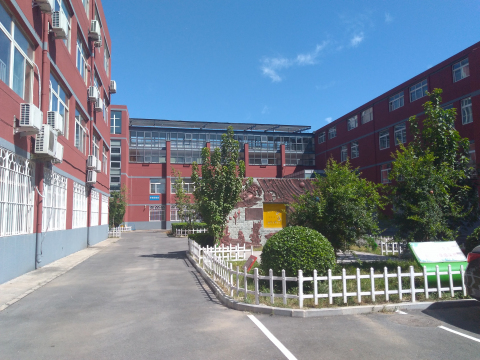When we came back to Beijing after the Silk Road Tournament, we still had more than a week until the regular school would start. Time for some exploration of the apartment, places to eat and of course the best way to the go school and the school itself.
In the corridor to our apartment, we found the first big and unsolved question of our surroundings: the whole wall is filled with mysterious numbers and Chinese characters. For now, we watch those numbers every day without understanding their meaning and we pretend that they have some hidden important meaning for our life…

In any case, our will to study go was greater than the ambition to solve the riddle about those numbers, so already on the first day, all of us went to the go school together to check out what we could get there.
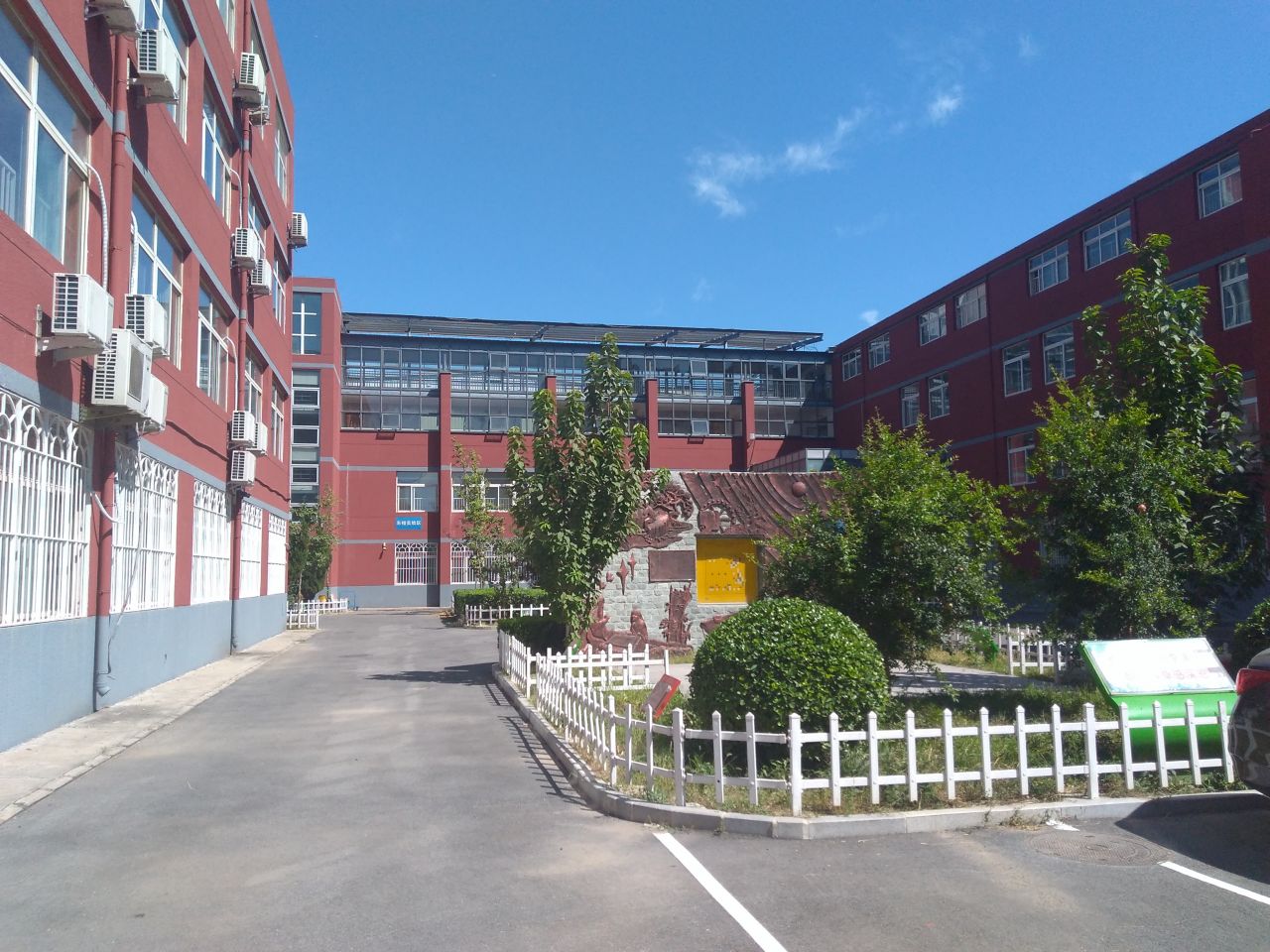
We were lucky to meet one of the teachers there who allowed us to use the school every day even though they were still preparing for the new study period. This was visible already when we put our first step into the classrooms: All the tables were well equipped with go boards, just as you would expect from a go school. However, there was one problem: we didn´t find a single go stone. We finally understood why when we came to the very last classroom, where apparently all the stones were put for cleaning. The sight of such a mass of go stones in one place is somehow an unusual view….
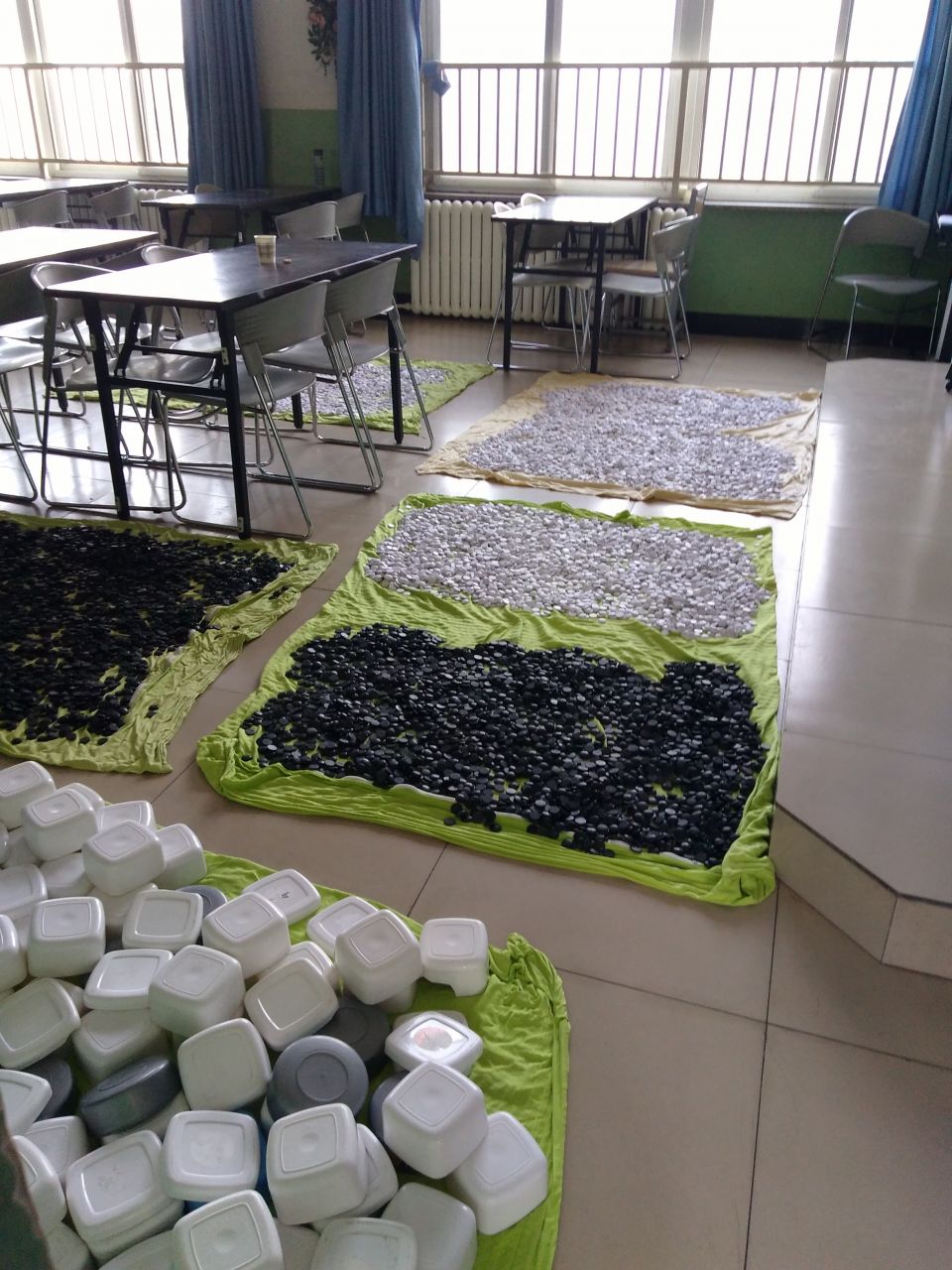
From that day on we spent most of the time at the school, solving tsumego from old sheets we found there, replaying pro games from kifu books or playing games with each other.
In a way, we were really lucky to be allowed to go there early, because like this we could have some insight on how they prepared everything at the school. One day we were introduced to our new teacher, packed into boxes that were just delivered to the school. The school bought three computers with a very strong graphics card to make high-quality reviews with AI Leela Zero.

Finally, on the 1st of September, the regular school started! At the beginning of each month, the school holds a huge 11 round tournament called “Big Cycle” in which all students from the school participate to determine which league we will belong to. In the 11 games, I managed 4 wins, Oscar 5, Sinan and Anton 6 and Stanislaw and Dominik 7.
After that, finally, the normal training in our leagues could start. These normal leagues are called “Small Cycle”. Leagues consist of 6 players and within half a week you will play each player once, after that you can go up or down a league, depending on your results. Instead of the first small cycle Dominik and Stanislaw played a tournament with professionals, so only 4 of us played normaly. Oscar and I managed to go up one league, while Anton was unlucky to win 4 games and lose in a lottery to determine which of the people with 4 wins goes up. Sinan couldn´t manage to stay in his league, unfortunately. During small cycles our schedule looks like this:
8:30-9:30 fast game with 3x30 seconds byo-yomi only
9:45-11:40 slow league game, 1h + 3x30 sec
(afterwards, you have to record your game on schools computer and you can ask questions to the professional teacher)
11:40-14:15 lunch break
14:15-15:15 1st tsumego test (usually we are given sheets with 16 or 24 problems)
15:15-17:15 review session
17:15-18:40 dinner break
18:40-20:40 slow league game, 1h + 3x30 sec
(again record and ask question afterwards)
20:40-22:40 correction of wrong answers in afternoon´s tsumego test + 2nd tsumego test
Usually, there is an easy and a difficult version of tsumego tests, depending on which league you are in.
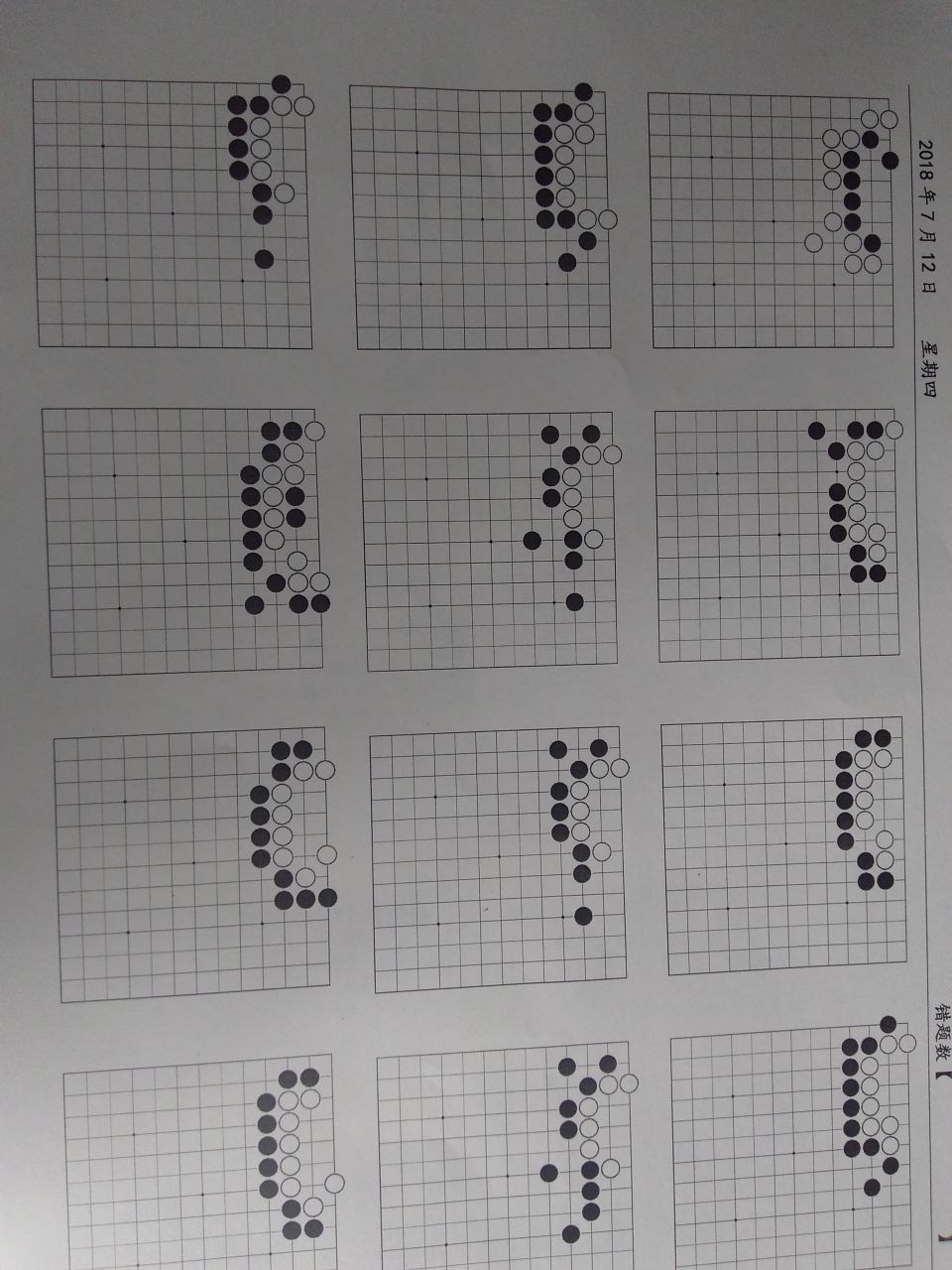
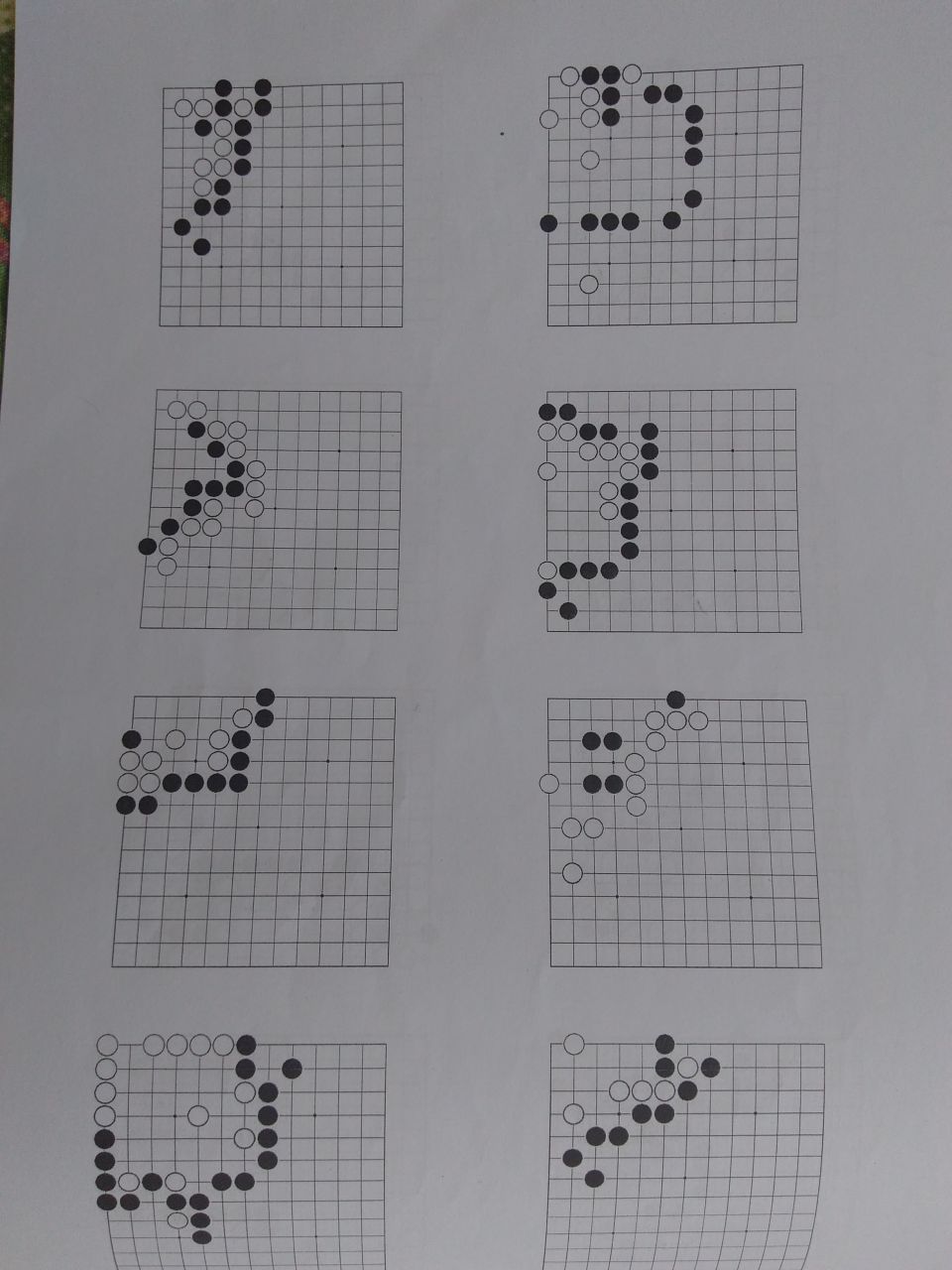
The review session is different every time depending on the teacher. Some prefer to do it on screen and use Leela Zero a lot, some only use Leela Zero for a few important questions. Sometimes reviews are also done in “old” fashion on a real board. The strength of the teachers is really insane. One teacher who usually teaches in my room always uses Leela Zero in an interesting way: first, he gives his own judgement and suggestion, then often he starts Leela Zero and 99% of the time they completely agree. For me, this combination of human explanation and superhuman computer playing strength is a very nice way to study and I prefer it a lot over reviewing games just with Leela Zero by myself.
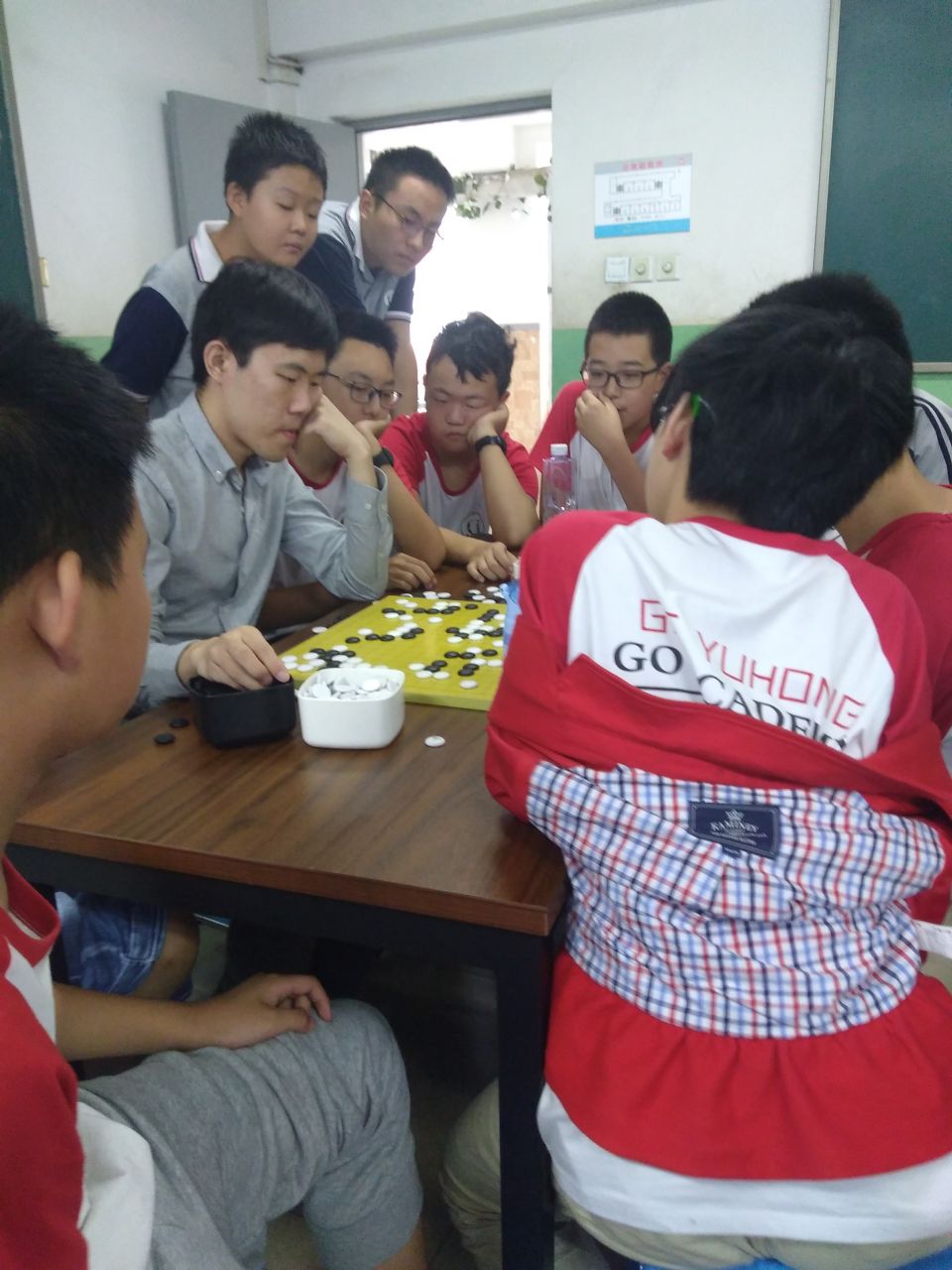

All of the reviews are in Chinese, of course, so without any language knowledge it might be very hard to follow, however, I try my best to learn the basic Chinese go vocabulary and it gives me some extra motivation to study more.
Some Chinese knowledge is also helpful when interacting with the other kids from the school who rarely speak a few words of English. One small boy from the school supports me a lot with my Chinese by “translating” everything that is said to very easy and slow Chinese to make it easier for me to understand. This is not only really cute but also actually very helpful.
My next article will cover how a Chinese amateur tournament turned out to be worth more for Sinan than winning Grand Slam would have been, a random walk to a random mountain and why Leela Zero is really cute...





